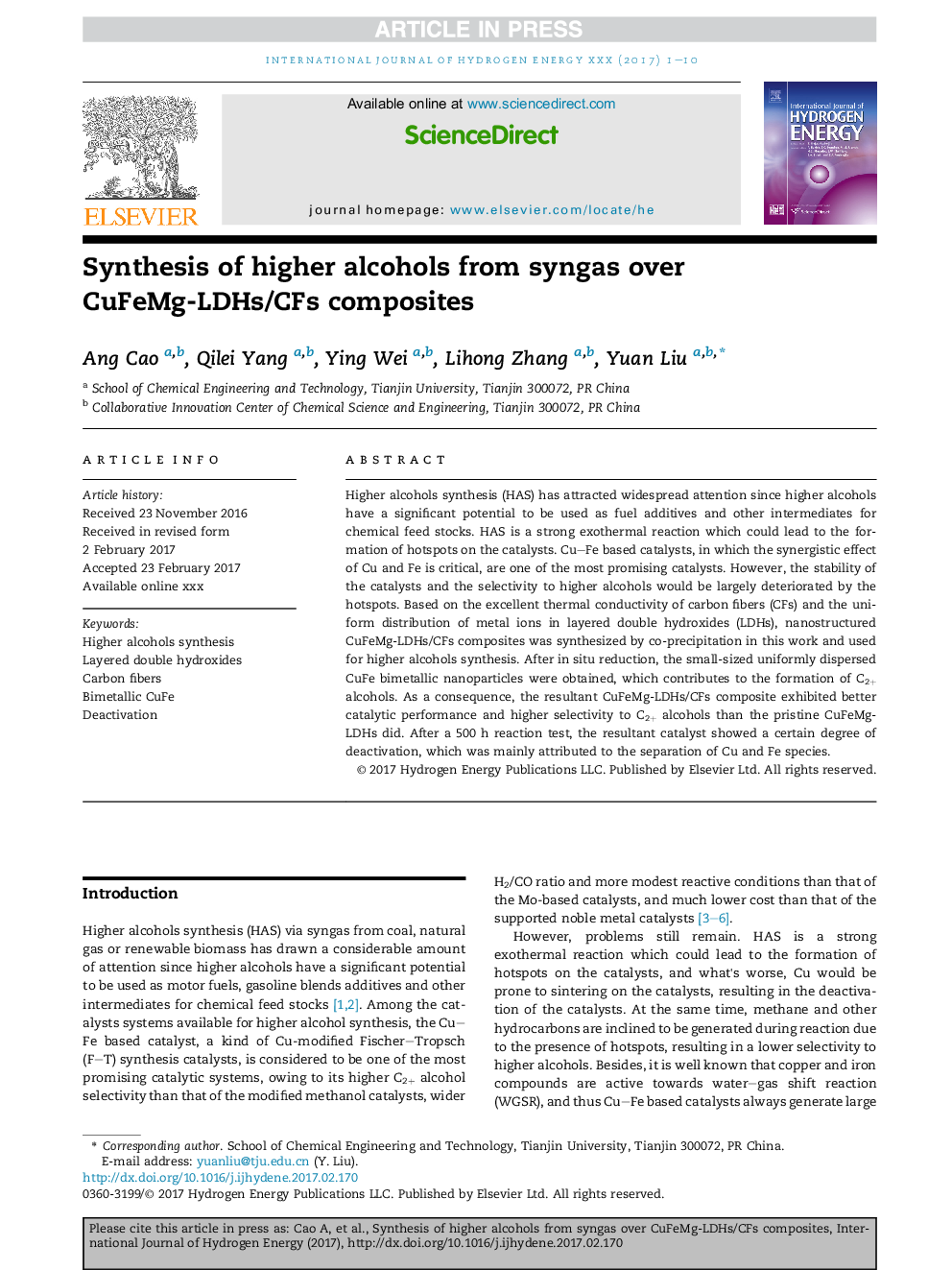| Article ID | Journal | Published Year | Pages | File Type |
|---|---|---|---|---|
| 5146062 | International Journal of Hydrogen Energy | 2017 | 10 Pages |
Abstract
Higher alcohols synthesis (HAS) has attracted widespread attention since higher alcohols have a significant potential to be used as fuel additives and other intermediates for chemical feed stocks. HAS is a strong exothermal reaction which could lead to the formation of hotspots on the catalysts. CuFe based catalysts, in which the synergistic effect of Cu and Fe is critical, are one of the most promising catalysts. However, the stability of the catalysts and the selectivity to higher alcohols would be largely deteriorated by the hotspots. Based on the excellent thermal conductivity of carbon fibers (CFs) and the uniform distribution of metal ions in layered double hydroxides (LDHs), nanostructured CuFeMg-LDHs/CFs composites was synthesized by co-precipitation in this work and used for higher alcohols synthesis. After in situ reduction, the small-sized uniformly dispersed CuFe bimetallic nanoparticles were obtained, which contributes to the formation of C2+ alcohols. As a consequence, the resultant CuFeMg-LDHs/CFs composite exhibited better catalytic performance and higher selectivity to C2+ alcohols than the pristine CuFeMg-LDHs did. After a 500Â h reaction test, the resultant catalyst showed a certain degree of deactivation, which was mainly attributed to the separation of Cu and Fe species.
Related Topics
Physical Sciences and Engineering
Chemistry
Electrochemistry
Authors
Ang Cao, Qilei Yang, Ying Wei, Lihong Zhang, Yuan Liu,
